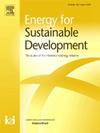亚洲家用和工业厌氧消化沼气能源生产的安全事故评估
IF 4.9
2区 工程技术
Q2 ENERGY & FUELS
引用次数: 0
摘要
厌氧消化是一种提供可再生能源(沼气)生产和可持续发展的显著环境效益的技术。然而,与其他生产系统一样,厌氧消化系统也存在潜在的危险,然而,在检查这些安全事件和提高人们对拯救生命和财产风险的认识方面,研究还很有限。这个集体案例研究的主要目标是提高可持续沼气生产的安全性。从1958年到2023年,亚洲共发生163起沼气事故。中毒主要是由于高浓度的硫化氢(H2S),占总案例的81.6%,其次是爆炸和/或火灾(17.2%)和消化器结构倒塌(1.2%)。每百万家庭和工业消化器分别发生2.8和312.2起事故。中国报告的事故数量最多(128起),其次是越南(12起)、泰国(11起)、印度(8起)、马来西亚(2起)、菲律宾(1起)、台湾(1起)。在这些事故中,124起涉及家庭沼气池,39起发生在工业沼气池设施。157起事故造成321人死亡,220人受伤,其余6起事故仅造成财产损失。受害者男女比例约为6.4:1,受害者年龄从2岁到75岁不等。职业事故和非职业事故分别占可识别情况的79.6%和20.4%。3月至8月是家用消化器发病率最高的月份。从20世纪90年代到2010年代,报告的沼气事故有所增加。病例报告主要来源于在线新闻、学术出版物和其他各种渠道。有证据表明,实际案例的数量被低估了。亚洲的沼气事故比其他地区严重得多。本文章由计算机程序翻译,如有差异,请以英文原文为准。
Assessment of safety incidents in household and industrial anaerobic digestion for biogas energy production in Asia
Anaerobic digestion is a technology that offers renewable energy (biogas) production and significant environmental benefits for sustainable development. However, anaerobic digestion systems, like other production systems, pose potential hazards, yet limited research has been conducted to examine these safety incidents and raise awareness of the risks for saving lives and property. The primary objective of this collective case study was to enhance the safety of sustainable biogas production. A total of 163 biogas accidents from 1958 to 2023 were identified in Asia. Poisoning, mainly due to high concentration of hydrogen sulfide (H2S), constituted 81.6 % of the total cases, followed by explosions and/or fires at 17.2 %, and digester structure collapse at 1.2 %. There were 2.8 and 312.2 accidents per million household and industrial digesters, respectively. China reported the highest number of accidents (128 cases), followed by Vietnam (12), Thailand (11), India (8), Malaysia (2), the Philippines (1), and Taiwan (1). Among these accidents, 124 involved household biogas digesters, and 39 occurred at industrial digester facilities. The accidents have resulted in 321 deaths and 220 injuries in 157 cases, and the remaining six cases solely caused property damage. The male to female victim ratio was approximately 6.4:1, with victim ages ranging from 2 to 75 years. Occupational and non-occupational accidents represented 79.6 % and 20.4 % of the identifiable circumstances, respectively. The highest incident occurring months for household digesters were from March through August. An increase in reported biogas accidents was witnessed from the 1990s through the 2010s. Case reports were primarily sourced from online news, scholarly publications, and other miscellaneous channels. Evidence suggests an underrepresentation of the number of actual cases. Biogas accidents in Asia demonstrate a markedly severe nature than other regions.
求助全文
通过发布文献求助,成功后即可免费获取论文全文。
去求助
来源期刊

Energy for Sustainable Development
ENERGY & FUELS-ENERGY & FUELS
CiteScore
8.10
自引率
9.10%
发文量
187
审稿时长
6-12 weeks
期刊介绍:
Published on behalf of the International Energy Initiative, Energy for Sustainable Development is the journal for decision makers, managers, consultants, policy makers, planners and researchers in both government and non-government organizations. It publishes original research and reviews about energy in developing countries, sustainable development, energy resources, technologies, policies and interactions.
 求助内容:
求助内容: 应助结果提醒方式:
应助结果提醒方式:


